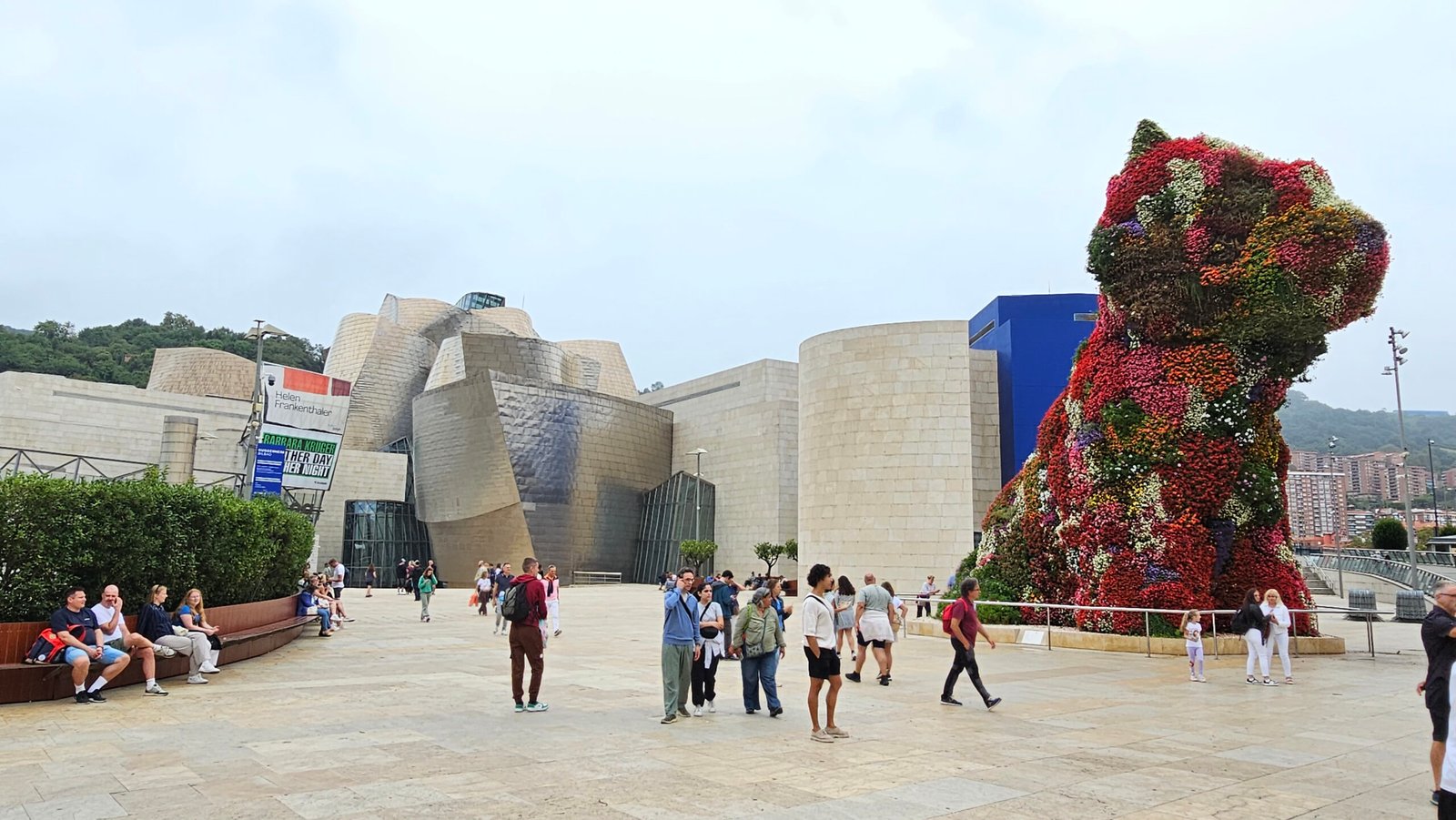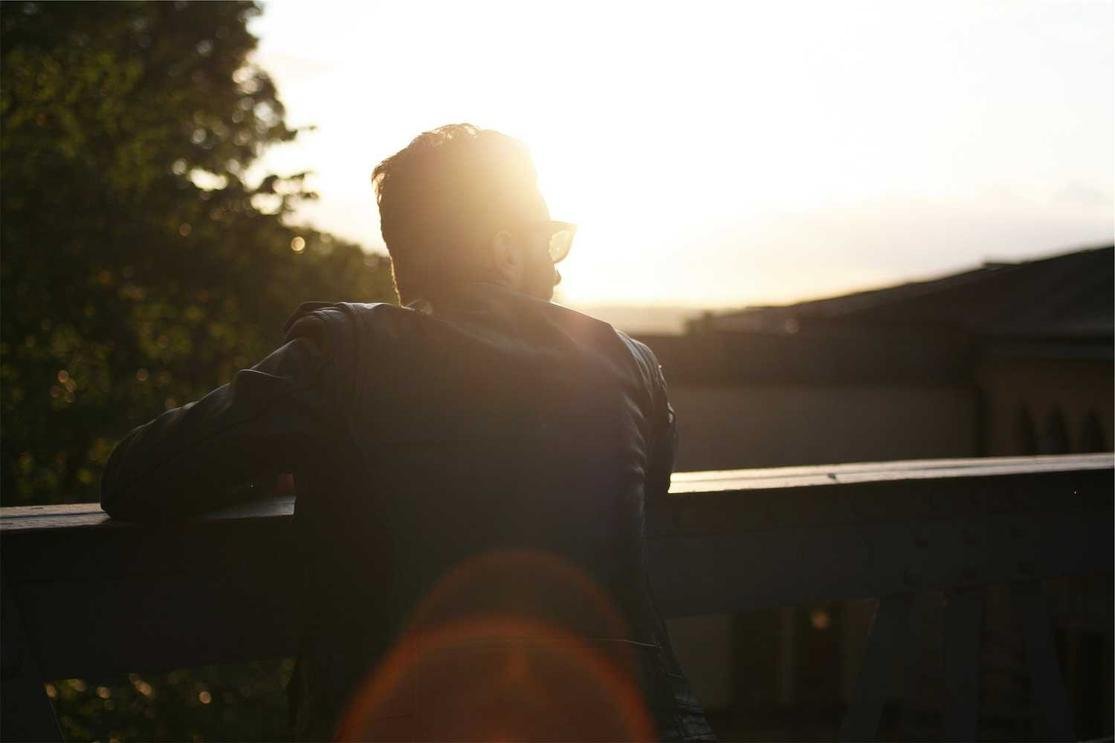Arrival in Bilbao — A Surprise That Hung in the Air
August 26: we left Lisbon behind — the iron hills, the tile roofs, the Atlantic spray — and pointed our wheels north toward Bilbao. We expected one night, to see the Guggenheim, do a pintxo crawl, hit the market, then move on. But the universe (and our concierge at Hotel Carlton) intervened.
From the moment we stepped into Hotel Carlton, the staff welcomed us like returning family. Our concierge suggested restaurants and tickets to the museum of Bilbao — schedules, tickets — but something in his eyes said: stay. So we did. Two nights, instead of one.
And we’re glad. Because in those extra hours, Bilbao’s streets unfolded their secrets. The modern steel and glass of the Guggenheim reflecting over the Nervión, the old Casco Viejo alleys whispering in Basque and Spanish, the Mercado de la Ribera buzzing with vendors, fish, produce, voices. (Bilbao’s Ribera Market is one of Europe’s largest covered food markets.) Wikipedia
We walked, drank, ate our first Basque experiences, tasted little bites of anchovy and cod, wandered until dusk. And we felt — this is the kind of place you could stay a week and not scratch the surface.
To San Sebastián — The Drive That Changed the Lens
Wrenching ourselves away was hard. But San Sebastián beckoned. We picked up a car in Bilbao, with no rigid plan, and drove coastal roads, hugging the sea, rising and falling with green hills and hidden coves.
When we pulled into San Sebastián, we parked and simply walked. The shore, the boardwalk, the salt wind. We stopped at the first terrace, olives and crusty bread hit the table. The first bite: shock. The ingredients — olive oil, sea salt, fresh bread, local produce — hit us differently. Why had we never tasted freshness like this?
We looked at each other. This was another planet.
Back at the hotel, we changed, cleaned up, prepared for what I jokingly called the Bourdain experience — though we had no idea the full force of what was coming. And the next night, we returned. Again, and again. Nothing disappointed. Food so fresh, so intense, so proud — it spoke of lineage, land, water, tradition.
We stayed three nights. Three nights of tapas, pintxos crawls, late walks in the Old Town alleys, sea spray, Basque voices, laughter.
Bayonne, France — A New Language of Taste
Then, Basque stretched across the border. We entered Bayonne — French Basque Country. Sheri was charmed instantly. We walked into the town, picked a corner terrace at an intersection. We ordered planche de jambon & burrata pesto.
HOLY. Words nearly fail: salty ham, silky burrata, fresh pesto — they danced on the tongue. And the white wine the waitress recommended — crisp, floral, local — nothing like we had ever tasted.
Sheri whispered to me: I could move here.
In Bayonne, the Basque spirit is alive in language, in plate, in streets. Their pride is quiet but deep. The land owns them, but they own their craft.
Food as Identity — The Passion That Isn’t a Gimmick
We came as travelers. We left as witnesses. The food in the Basque Country is not just meals; it’s declarations.
Pintxos (Basque tapas) are tiny canvases: a sliver of anchovy, olive, pickled pepper (the legendary Gilda) — simple, sharp. Authentic Food Quest+2Wikipedia+2
Dishes like bacalao al pil-pil, marmitako, txuleta (steak), pantxineta (dessert) — all rooted in local seas, local animals, local seasons. Zinema7Hotel+2Spanish Sabores+2
In San Sebastián, restaurants with Michelin stars multiply — the concentration of top restaurants per capita is one of the highest in the world. Wikipedia
But beyond the high end, in bars and bodegas and coastal villages, the same principles hold: respect for ingredients, precision in technique, pride in legacy. The Basque Country was one of the crucibles of modern Spanish gastronomy. atasteofspain.com+1
Walking their streets, I thought: if you want to understand a people, watch how they feed themselves. Here, their pride is in every bite.
Architecture, Streets & Nature — The Landscape of Belonging
This region keeps you honest. Bilbao juxtaposes heavy industrial past with sleek modernity. The Guggenheim itself is a symbol: bold, disruptive, shining glass over river and steel. Luxury Lifestyle Magazine+1
San Sebastián — Belle Époque façades, narrow alleys branching from plazas, stone churches, the cresting hills behind the city framing the bay like a film still.
Bayonne — old ramparts, narrow streets, half‑timbered houses, the scent of drying ham in the air.
All around, the hills and Atlantic forge the climate, the crops, the seas. The Basque Country is not just a place you visit — it’s a skin you wear.
Lessons & Takeaways for Slow Trotters + Digital Nomads
- Don’t rush. One night became two. One stop became three nights. Let the land pull you.
- Let food lead. In Basque Country, eating is not incidental — it is pilgrimage. Let your nose, your hunger, your curiosity choose your hours.
- Rent a car. The coast roads, hidden beaches, small villages — public transport won’t bring you here.
- Talk to locals. The waitress in Bayonne, the bartender in San Sebastián, the tortilla maker in a pintxos bar — they carry stories, languages, traditions.
- Balance work and wonder. Yes, we had calls and deadlines. But we built in free time: walk days, no‑agenda hours, wandering.
- Be ready to change your paradigm. What you thought food could be — freshness, purity, seasonal — gets redrawn here.
A Mini Itinerary (August 26 → + few days)
- Bilbao (2 nights): Guggenheim, pintxo crawl, Mercado de la Ribera, old town stroll
- Drive to San Sebastián (coastal route): stop at scenic breaks, beach views
- San Sebastián (3 nights): boardwalk walk, pintxos bar hopping, local dinners, monte walks
- Bayonne (1–2 nights): French Basque charm, ham & cheese, local wines, market strolls
- Next: Bordeaux, Saint‑Émilion — ready for wine, stone, stories.
Call to Action & Affiliate Note
If you’re hooked on this ride — wanting full route maps, hidden village stops, restaurant reservations, and behind‑the-scenes tips — subscribe to OriginalGlobeTrotters.com and receive our OGT Insights.
And yes, our travel insurance link is there for a reason: in remote places, in cross‑border car rentals, in food adventures — being covered means you roam freer, sleep deeper, risk less.
The Basque Country reshaped us. The roads, the salt, the rituals — they whispered invitations. We accepted.
Next: Bordeaux and Saint‑Émilion await — more terroir, more grapes, more stories.
Eskerrik asko, Euskadi. We’ll be back.





